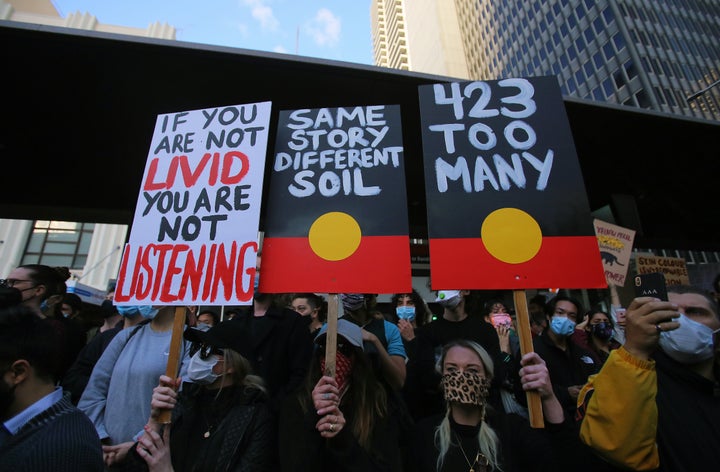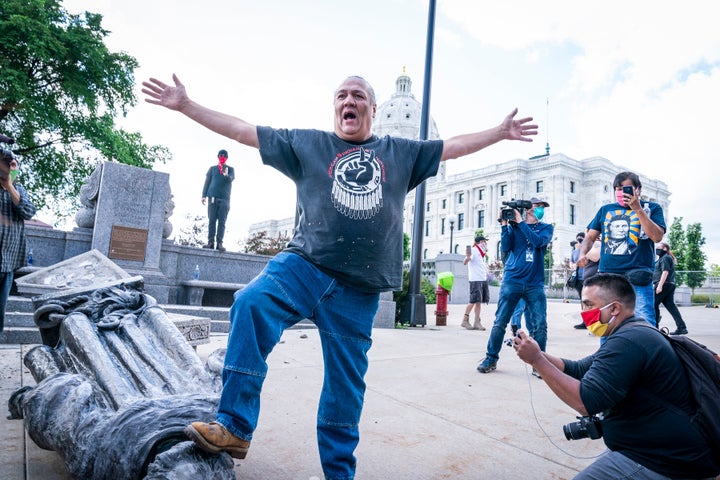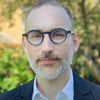As thousands of people around the world continue to march in support of racial justice following the death of George Floyd last month, Indigenous communities are highlighting the ways in which they, too, have long been victims of systemic racism and police brutality.
In the United States, Native American activists have been a noticeable presence at Black Lives Matter protests, while in the United Kingdom, New Zealand and Australia, Black and Indigenous protesters have called attention to longstanding problems in their countries’ own police forces and worked to remove statues glorifying colonialists and slave traders.
In Canada, large crowds came together across New Brunswick over the weekend to take part in healing walks in honor of two Indigenous people who were shot and killed by police in the province within the last two weeks.
Chantel Moore, 26, from Tlaoquiaht First Nation, was shot by police at her home in Edmundston, where they were called to perform a “wellness check” on June 4. Rodney Levi, 48, who was from Metepenagiag Mi’kmaq Nation, was shot by police on Friday night. All told, six Indigenous people have been killed by police in Canada since April, according to the Globe and Mail.
“This is a broken system, it’s not working,” Jeremy Dutcher, a Wolastoqiyik member of Tobique First Nation and award-winning musician, told HuffPost Canada.

Terry Teegee, the regional chief of British Columbia’s Assembly of First Nations, pointed to a series of deaths of Indigenous people in police custody in recent years.
“In general society, there’s already an inequality and accusation if you’re Indigenous, you’re guilty. If you’re a Black person, you’re already guilty. Just because of your skin color,” he said.
Indigenous people make up only 5% of Canada’s population, but account for one-third of the country’s prison population. Moreover, Indigenous people make up a third of deaths in police custody, according to an analysis from the Globe and Mail last year.
Anger grew this week as well after video was released of a member of the Royal Canadian Mounted Police (RCMP) punching and tackling the chief of Athabasca Chipewyan First Nation over alleged expired license plates.
The footage prompted concern from Canadian Prime Minister Justin Trudeau.
“Everyone who has seen this video has serious questions about what exactly happened, about how it happened this way and about the use of force that we saw,” Trudeau said.
It’s hardly an isolated incident, however.
“That’s the tip of the iceberg,” Aluki Kotierk, president of Nunavut Tunngavik Inc., the organization that represents the territory’s Inuit, told HuffPost Canada.
For every case of alleged police misconduct that’s caught on video or reported in the news, she said she hears of several more. And mistrust of the RCMP — a force created to control Indigenous people — runs deep in those communities.
Mounties forced Indigenous people, including Inuit, onto reserves, and removed Indigenous children from their homes to send them to residential schools. They slaughtered thousands of sled dogs in an attempt to destroy the Inuit’s way of life, and then denied it for decades.
“Many of us grew up with a fear of the RCMP and what is it they’re going to do?” said Kotierk. “You walk in your community, and you see the RCMP drive by. And you take stock of what has happened. Are they looking at you? You hear a knock on the door and you think, ‘Oh my goodness, who is that, is that the RCMP?’”

The situation is similar in Australia, where Black Lives Matter protesters have highlighted the more than 400 Aboriginal deaths that have occurred in police custody over the past three decades.
“This is what we now have to say to the premier and the government: Stop the killings of Aboriginal people and racial violence and hate crimes,” human rights lawyer and activist Hannah McGlade, a Noongar woman, said at a large demonstration in Perth, Western Australia.
In Darwin, Northern Territory, two young Indigenous Larrakia women, cousins Sharna Alley and Mililma May, organized a protest that attracted more than 1,000 people over the weekend.
“On Larrakia land children have been stolen, Aboriginal language and culture has been stolen,” May told the crowd, according to The Guardian. “On Larrakia land, Aboriginal children make up 100% of the Don Dale youth detention center. On Larrakia and surrounding land, Aboriginal people are killing themselves at the highest rate in the world.
“Our Aboriginal men, women and children are targeted by police.”
At times, the parallels between the situation in Australia and that in the United States can be painfully stark. George Floyd’s final words before he died were “I can’t breathe.” Aboriginal man David Dungay Jr. said “I can’t breathe” 12 times before he died while being held down by five prison guards in December 2015.
After seeing footage of the U.S. protests in recent days, the Dunghutti man’s family said that “more people are starting to realize the injustices against Black people and against First Nations people everywhere.”
Australian Prime Minister Scott Morrison said last week that there was “no slavery in Australia,” sparking widespread criticism and calls for the country to finally come to terms with its own racist history.
His comments came shortly after footage of a white Sydney police officer slamming an Aboriginal teenager to the ground went viral online.

Following the release of the video, New South Wales Premier Gladys Berejiklian acknowledged that the country must still do more to address systemic racism within the police force.
“We still have a long way to go,” Berejiklian said. “What happened in the U.S. is a good wake-up call for all of us.”
In Canada, Jeremy Dutcher, the member of Tobique First Nation, echoed that sentiment.
“This is a time of monumental change in this country and across North America — trust and believe that these struggles are connected,” Dutcher told HuffPost Canada.
He said that while Black and Indigenous experiences aren’t necessarily the same, these communities are connected by the forces that oppress them instead of protecting and serving them.
“That connection I hope can be made clear,” he said. “We can move in solidarity with our Black brothers and sisters, because we’re tired — enough is enough.”
With reporting from HuffPost Canada and HuffPost Australia.

